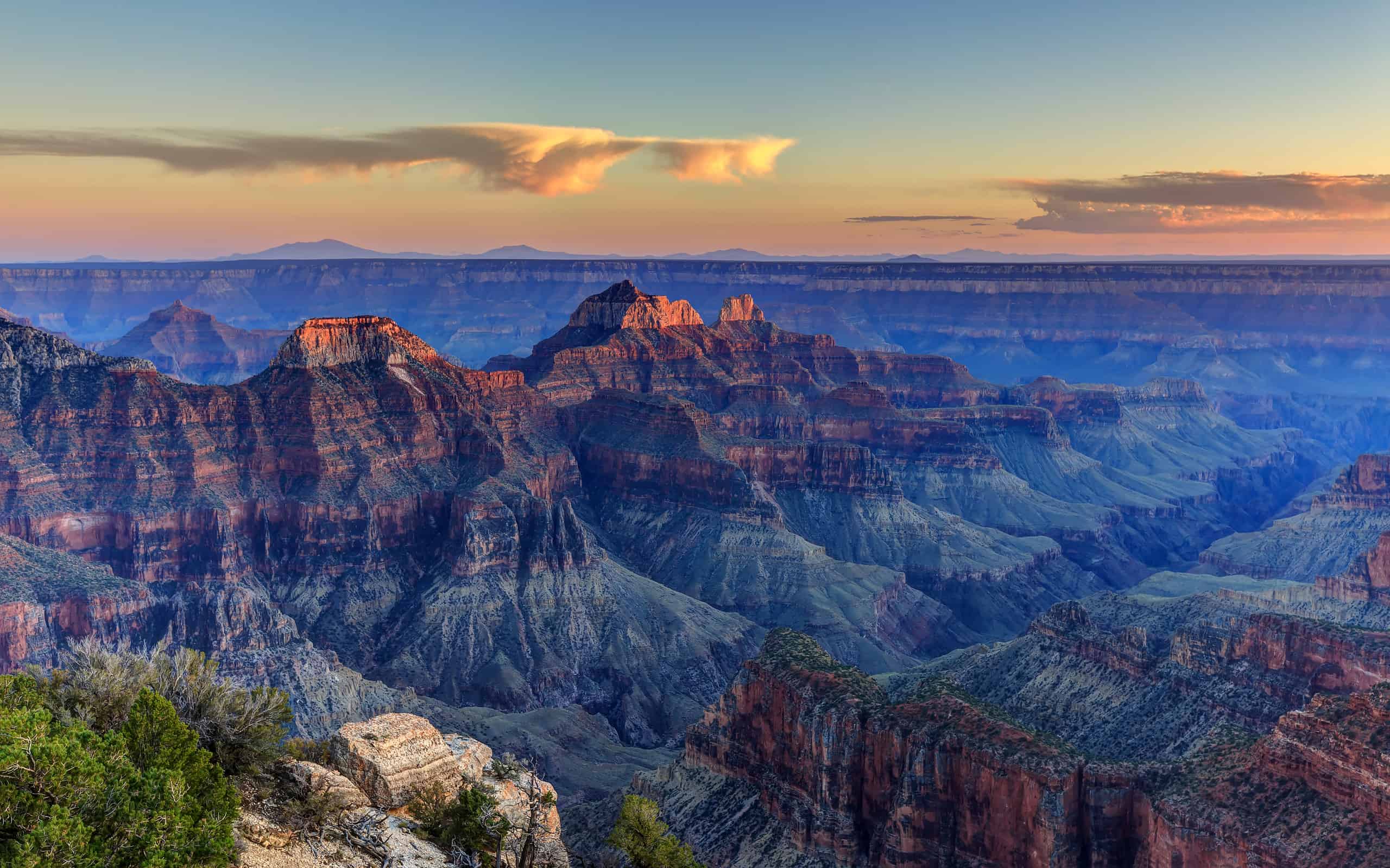The breathtaking scenery attracts visitors to the Grand Canyon from around the world. But the views aren’t the only incredible sights to see. Keep reading to discover the 10 most incredible discoveries ever unearthed in the Grand Canyon. You won’t believe what’s hiding in the famous Arizona desert.
1. The Great Unconformity

Find the spots where a billion years worth of rocks are missing in The Great Unconformity.
©Thiago de Paula Oliveira/Shutterstock.com
One of the most incredible discoveries ever unearthed in the Grand Canyon is right in front of your eyes. Sort of. The Great Unconformity is an erosional feature, meaning the appearance of the rocks in the Grand Canyon shows distinct periods of change. In short, at least a billion years’ worth of rocks are missing from geologic records.
The Great Unconformity is the surface between the Tapeats sandstone and the metamorphic rocks of the Granite Gorge. The surface changes show geologists and other scientists that rock layers are missing. Either rocks didn’t form during this time gap or weren’t preserved. Moreover, the Great Unconformity is evident worldwide, not only in the Grand Canyon. Despite many theories, experts cannot determine what’s missing or where it went.
2. The Coconino Sandstone
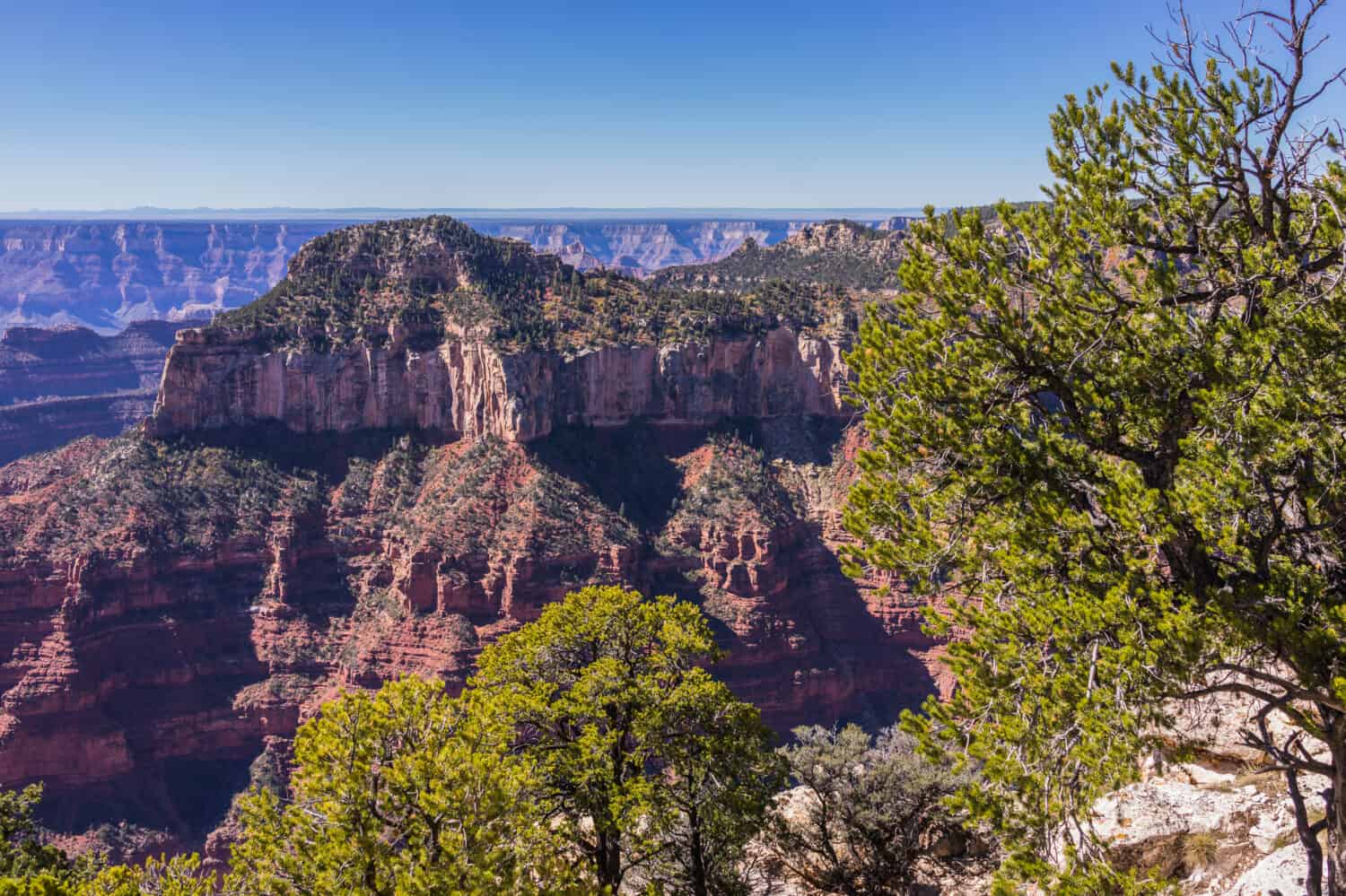
Fossils and tracks exist in the Coconino Sandstone.
©Michele Vacchiano/Shutterstock.com
The Coconino Sandstone is one of the most incredible discoveries ever unearthed in the Grand Canyon. The unique geological feature makes up a significant portion of the Grand Canyon’s rock layer. The Coconino sandstone is noticeable against the rest of the rocks. Its light-gray or white color and texture stand out among the cliffs and surrounding walls. It’s a mystery how they formed. However, they are believed to be about 280 million years old. These ancient sand dunes have persevered, providing only vague clues about the environment and the wildlife it has supported. Fossils and tracks exist in the sandstone, but no bones.
3. Cave of the Domes
The Cave of the Domes is the only cave open to the public in the Grand Canyon. This unique underground cave system is one of the most incredible discoveries ever unearthed in the Grand Canyon. Visitors can hike to the area near the Horseshoe Mesa at the end of the Grandview Trail to find it. The trail is further away from the popular village area and offers a spectacular view of the surroundings.
Within the old miner’s cave are limestone domes that eroded from the walls over millions of years. Their distinct look results from mineral deposits on the cave ceiling. It’s dark, quiet, and dry, creating an eerie sensory deprivation. Signatures from visitors who stopped by throughout the 1900s cover portions of the cave wall. Now, there is a guestbook to write your signature in at the entrance.
4. 313-Million-Year-Old Fossil Footprints
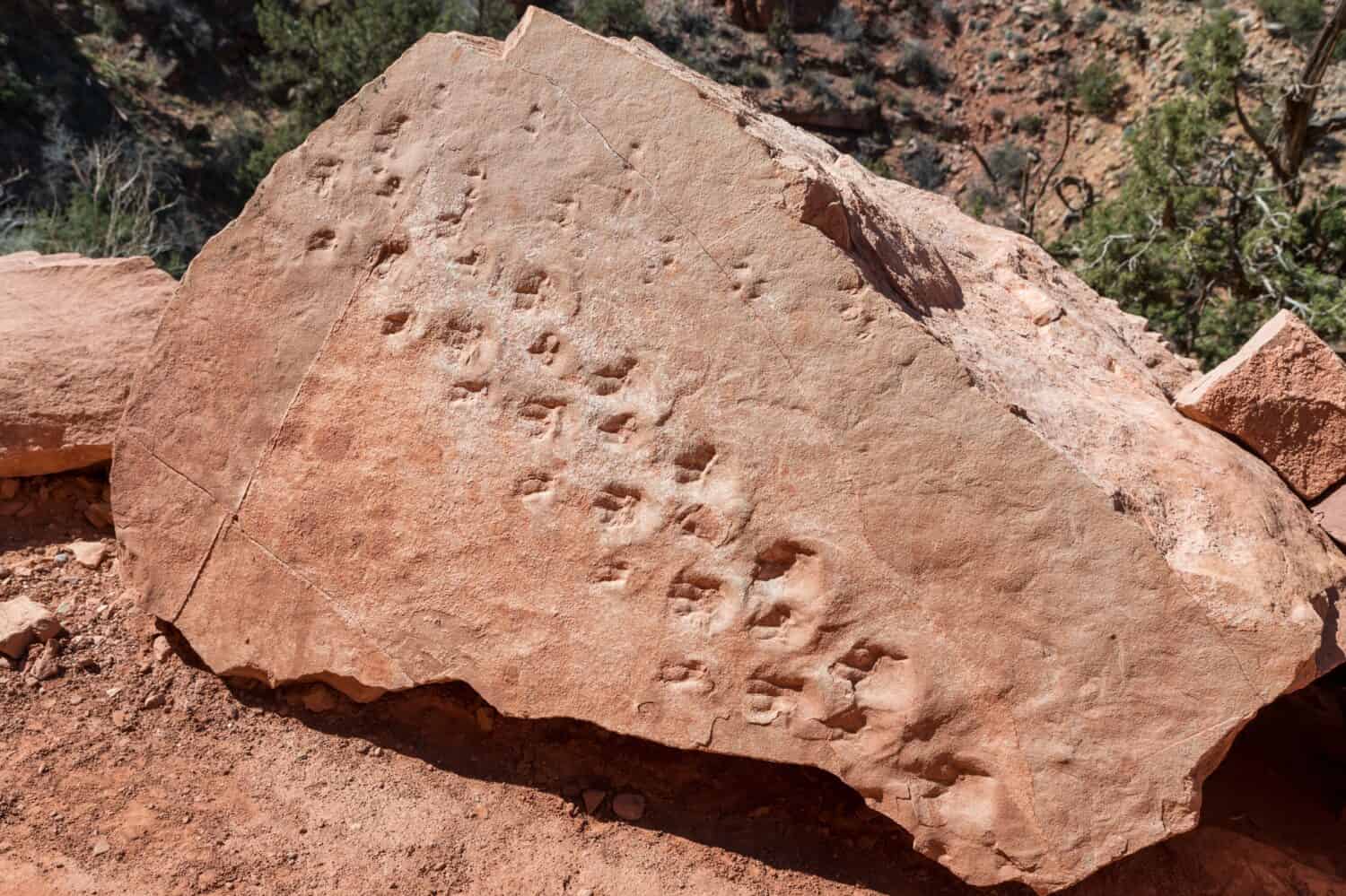
One of the most incredible discoveries ever unearthed in the Grand Canyon documents the earliest record of tetrapods.
©Thomas BLANCK/Shutterstock.com
In 2016, a cliff collapse led to the discovery of a 313-million-year-old fossil. A large boulder from the Manakacha Formation landed along one of the many hiking trails in the Grand Canyon. Norwegian geology professor Allan Krill and his students found the boulder during an expedition through the famous canyon. Upon further inspection, they realized a distinct set of fossil footprints were preserved. Krill sent a picture of the footprints to Stephen Rowland, a colleague and paleontologist at the University of Nevada Las Vegas, for more information.
The exciting discovery recorded the movement of two animal species that traveled along the slope of the sand dunes with a lateral-sequence walk, a distinct gait used by tetrapods like dogs or cats. The discovery is important because it documents the history of vertebrate animals and is the earliest record of egg-laying animal tracks in the sand dunes.
5. 280-Million-Year-Old Fossil Tracks
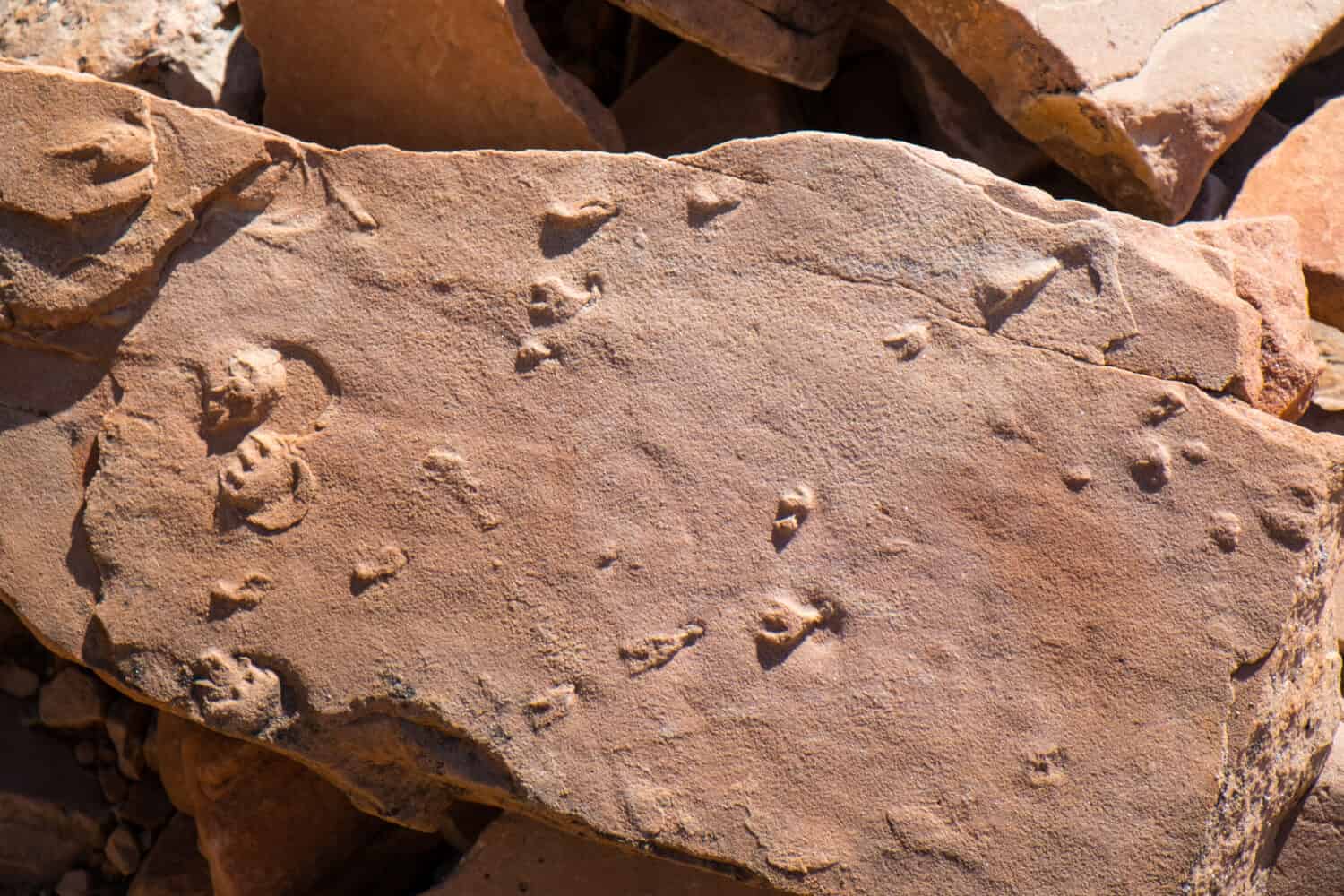
The Grand Canyon sandstone preserves fossils.
©Dominic Gentilcore PhD/Shutterstock.com
Well-preserved fossil tracks of tetrapods were discovered in a large sandstone boulder in a remote region of the Grand Canyon. The fossil is 280 million years old, predating the arrival of dinosaurs. Brazilian paleontologists Dr. Heitor Francischini and Dr. Spencer Lucas visited the national park in 2017 to update scientific articles reporting on fossil tracks in the Grand Canyon dating back to 1918, alongside other international paleontologists. While investigating fossil tracks in the park, they recognized tracks from the Ichniotherium.
This discovery of the Ichniotherium tracks was the first to occur in the Coconino Sandstone and from a desert environment. These tracks are also the youngest record of these types of fossils in the world. Although we may never know for sure what animal made these tracks, they are believed to belong to an extinct group of tetrapods known as diadectomorphs. These tetrapods possessed characteristics similar to those of amphibians and reptiles.
6. Split-Twig Figurines
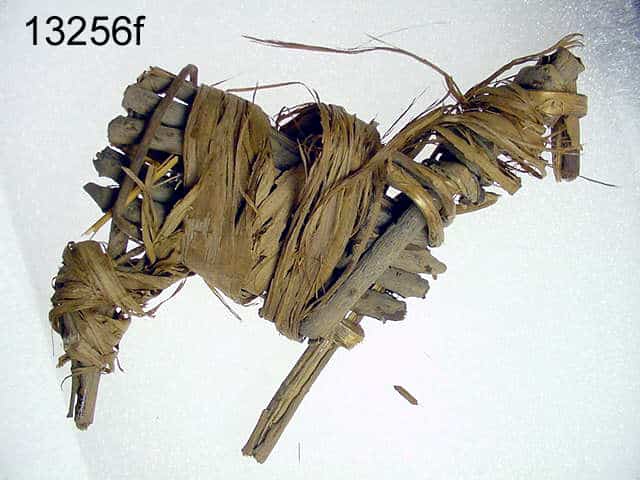
Hundreds of single-twig figurines exist in the Grand Canyon caves.
©Grand Canyon National Park / CC BY 2.0 – Original / License
Split-twig figurines are among the most incredible discoveries ever unearthed in the Grand Canyon. They were first recognized in caves within the Grand Canyon in 1933. In fact, hundreds of these figurines were present in 15 caves, dating back 2,000 to 4,000 years. The figurines are made from a single twig, typically willow, and then folded into intricate shapes to create animals. The most common split-twig figurines replicate bighorn sheep or deer. However, they sometimes resemble spears. They give us some insight into the lives of the people who lived in the Grand Canyon thousands of years ago.
7. The Pictograph Panel in Mallery’s Grotto

Graffiti defaces the ancient pictograph panel along Bright Angel Trail
©Grand Canyon National Park / CC BY 2.0 – Original / License
Walking down Bright Angel Trail in the Grand Canyon National Park is like stepping into a time capsule. The steep dirt trail contains remnants of rich human history visible from the path. Find the pictographs painted in red by previous canyon occupants on the first upper tunnel along the trail. Visitors can also see other images and symbols on the rocks by using binoculars.
Mallery’s Grotto contains the pictograph panel and other artifacts of the Cohonina people. Mallery’s Grotto dates back to around 2000 BCE and was used by the Havasupai people, who were forced to leave their native land when the Grand Canyon National Park opened. The site is named for Garrick Mallery, an authority on North American pictographs who worked for the U.S. Bureau of Ethnology.
8. Shasta Ground Sloth Remains
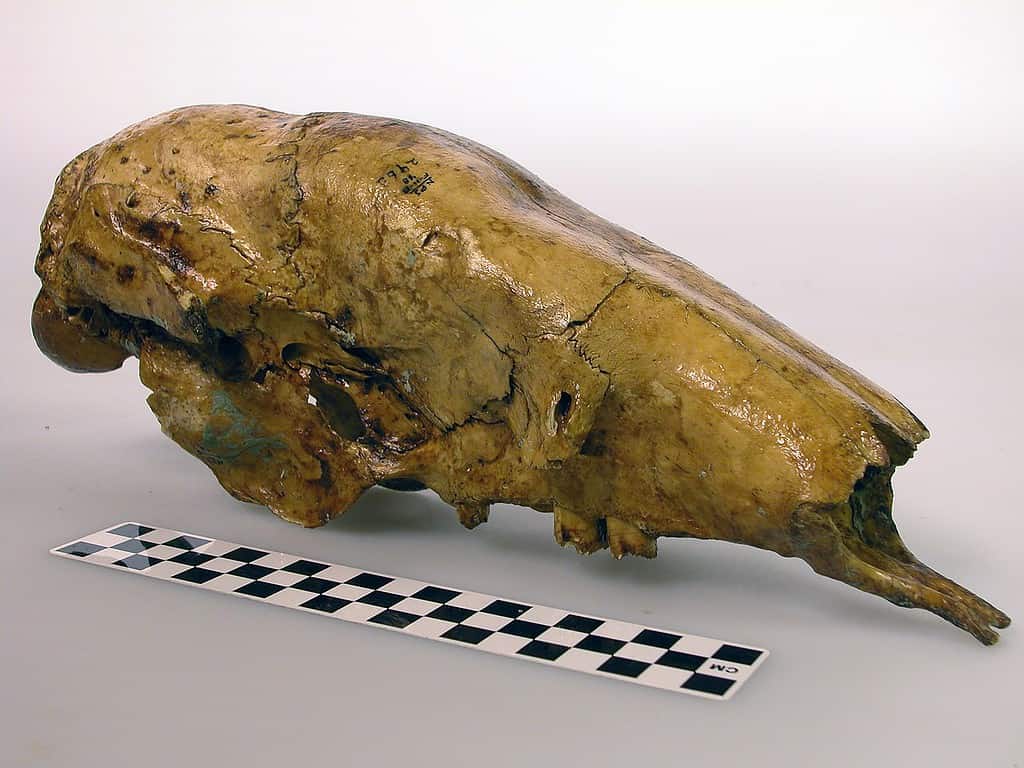
The preserved skull most likely belonged to a sloth the size of a bear.
In the desert caves of Arizona and New Mexico are Shasta ground sloth fossils. The extinct sloths were much larger than sloths today. In fact, some were as large as elephants. However, one of the most incredible discoveries ever unearthed in the Grand Canyon was likely the size of a bear.
The dry, stable environment in Rampart Cave preserved the skull, clumps of fur, and large amounts of dung that emitted a strong smell despite its preservation over 11,000 years. Research shows that the climate and vegetation in the area today would still be suitable for its survival. As a result, it’s most likely extinct because of humans.
9. Cave Pseudoscorpions
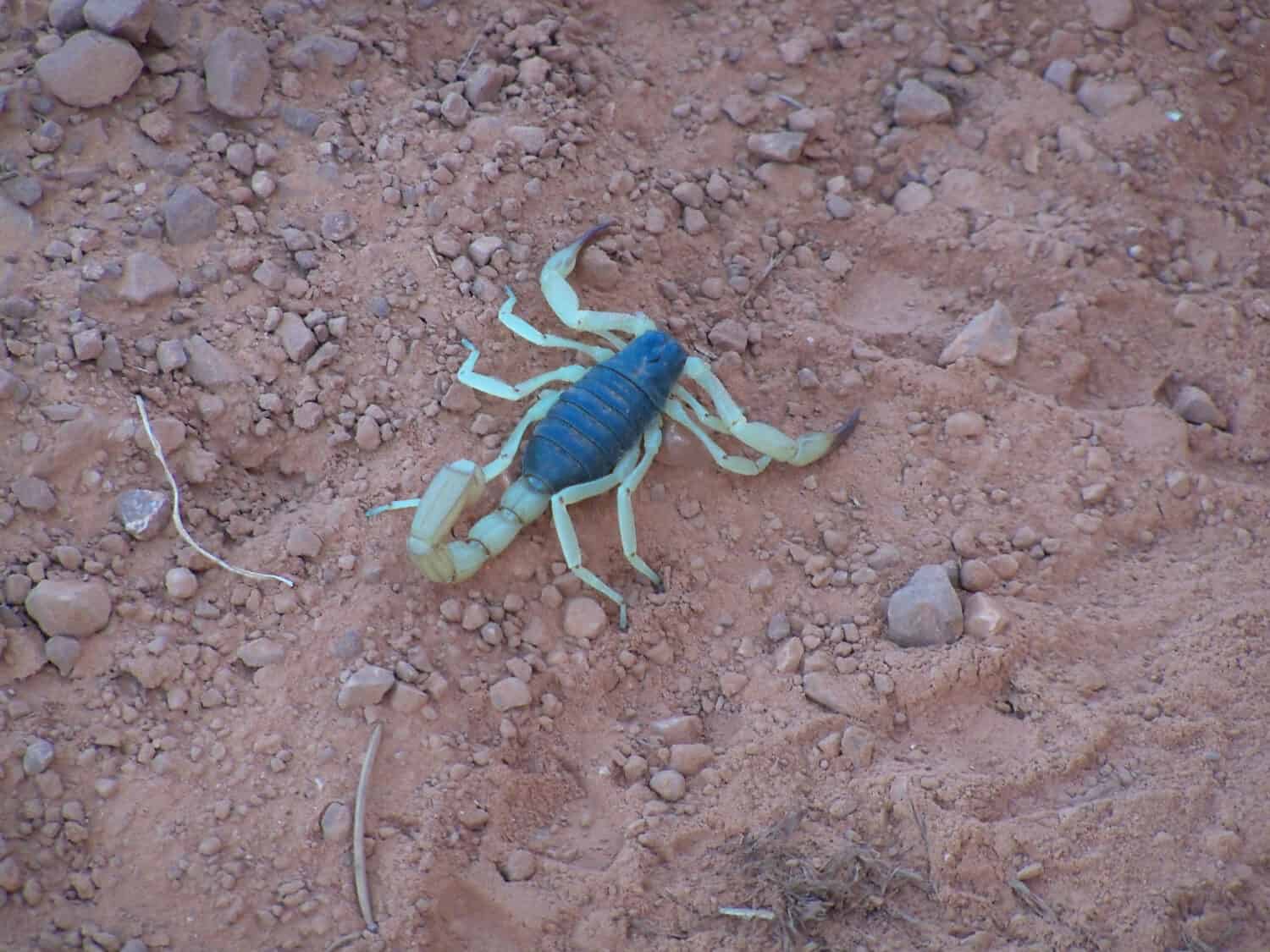
Scorpions are a native species to the Grand Canyon, but the caves reveal unique pseudoscorpions.
©Globepouncing/Shutterstock.com
Two species of “pseudoscorpions” were discovered in a cave on the northern rim of the Grand Canyon between 2005 and 2007. However, the news didn’t come out until 2014 because researchers needed time to determine if the species were unique. In order to confirm if the scorpion look-alikes were a new species, researchers had to analyze them and existing data on similar species.
The cave-adapted creatures don’t have eyes due to living in total darkness. And unlike scorpions, the elusive cave-dwellers lack a tail with a venomous stinger. Instead, those living in the Grand Canyon caves carry their venomous stingers in their pincers. One species also has a thickened pair of legs and a mound on its pincers, while the other has a deeper pincer than other previously recorded pseudoscorpions. Both species are only about 0.12 inches long and eat tiny invertebrates. The creatures are Hesperochernes bradybaughii and Tuberochernes cohni.
10. Uranium
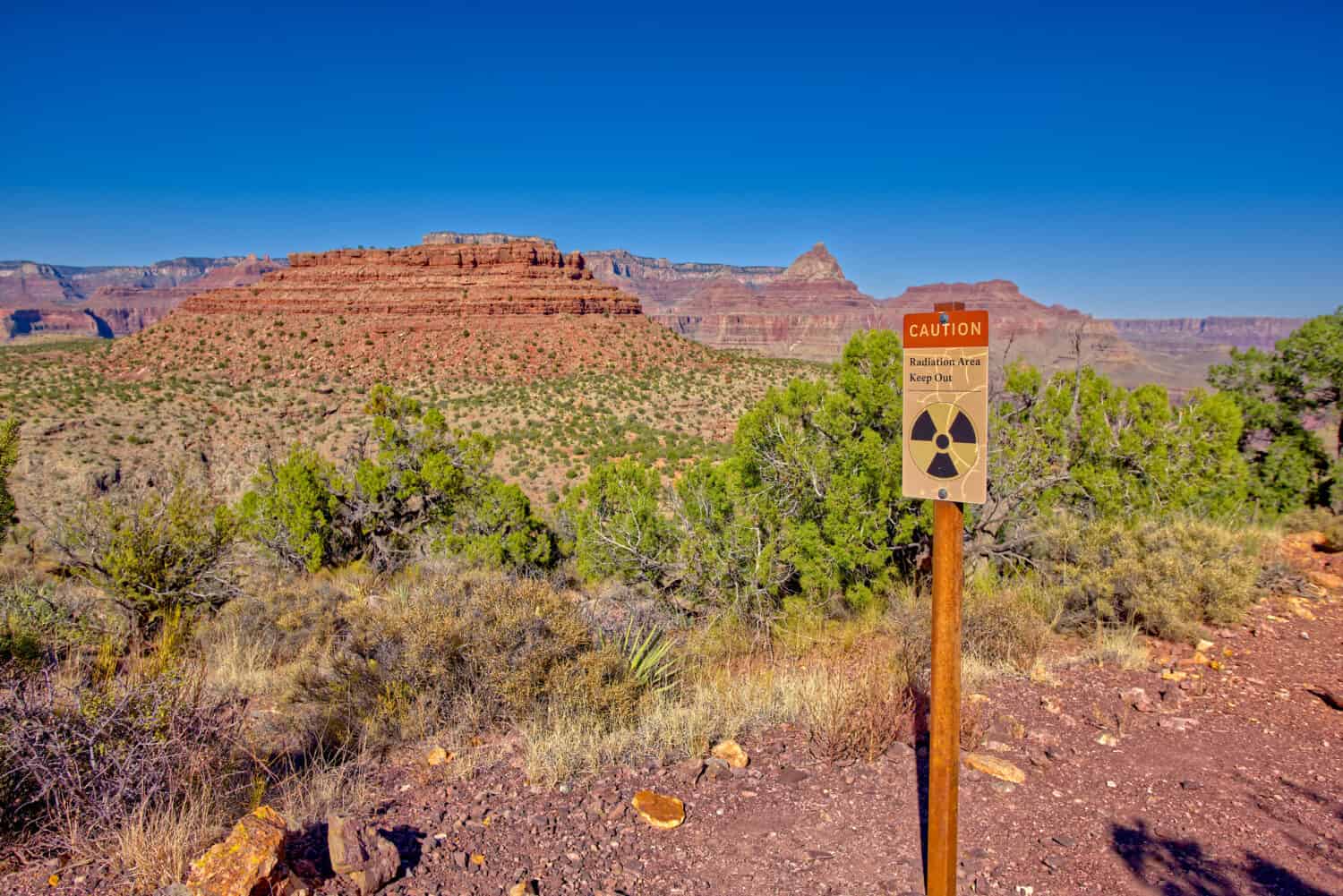
Uranium deposits exist throughout the Grand Canyon.
©Deep Desert Photography/Shutterstock.com
The Grand Canyon may be the last place you would expect to find Uranium mines. However, one out-of-use uranium mine is in the Grand Canyon National Park. Uranium deposits are present within the sandstone, siltstone, mudstone, and geologic features called breccia pipes. Uranium mining outside the Grand Canyon National Park began in the 1950s with the Orphan Mine. Seven uranium mines have operated outside the park, including the Pinyon Plain Mine, which threatens the natural water supply for the surrounding communities.
Summary of the 10 Most Incredible Discoveries Ever Unearthed in the Grand Canyon
| List Number | Discovery | Where it Was Discovered | What to See |
|---|---|---|---|
| #1 | The Great Unconformity | Throughout the Grand Canyon | Sandstone and metamorphic rocks |
| #2 | The Coconino Sandstone | Walls of the Grand Canyon | Sandstone |
| #3 | Cave of the Domes | Near Horseshoe Mesa at the end of the Grandview Trail | Limestone domes, mineral deposits, rodents |
| #4 | 313-million-year-old fossil footprints | Boulder from a cliff collapse | Fossilized footprints of an egg-laying tetrapod |
| #5 | 280-million-year-old fossil tracks | Coconino Sandstone boulder | Fossilized Ichniotherium tracks |
| #6 | Split-twig figurines | Inside caves throughout the Grand Canyon | Split-twig figurines and additional artifacts |
| #7 | The Pictograph Panel in Mallery’s Grotto | Bright Angel Trail | An overhanging ledge, painted pictographs, and graffiti |
| #8 | Shasta ground sloth remains | Rampart Cave | Shasta ground sloth skull, fur, and dung |
| #9 | Pseudoscorpions | Cave in the northern rim of the Grand Canyon | Hesperochernes bradybaughii and Tuberochernes cohni |
| #10 | Uranium | Sandstone, siltstone, mudstone, and breccia pipes | Caution signs to keep out of the uranium mines |
Thank you for reading! Have some feedback for us? Contact the AZ Animals editorial team.

